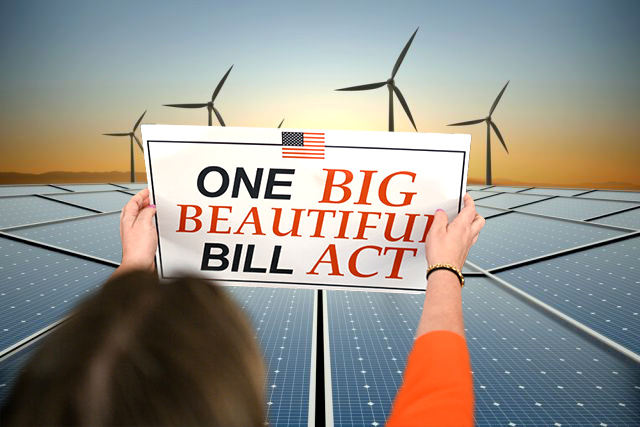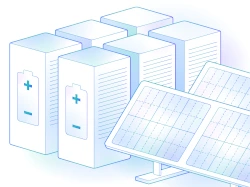One Big Beautiful Bill
Understanding the Big Beautiful Bill and Its Impact on Renewable Energy Tax Credits
The recently passed Big Beautiful Bill introduces significant changes to renewable energy credits and related policies. We understand this raises important questions for many in the industry. While Energy Toolbase is not a legal advisory firm, we’re committed to keeping our users informed.
This is a rapidly evolving situation. To help you stay up to date and navigate these changes, we’ve compiled a list of trusted resources from reputable organizations and industry experts.

ITC Safe Harboring Update: August 15, 2025
On August 15, 2025, the United States Treasury Department released new guidance on the topic of safe harbor provisions and “start of construction” for the commercial Investment Tax Credit (ITC). This update provides a better and more positive understanding for developers who want to take advantage of the credit.
Key takeaways:
- Project size threshold: Projects over 1.5 MW AC can no longer use the “5% Safe Harbor Test” and must rely solely on the Physical Work Test. Projects 1.5 MW AC or smaller may still use the 5% Test.
- Effective date: Rules take effect September 2, 2025, and will not be retroactive. Projects starting construction before this date may be safe harbor under the current rules.
- Continuous work rule: Unchanged projects are deemed compliant if completed within four years of beginning on-site construction.
- Other: No updates were provided regarding FEOC compliance or the residential ITC.
Why it’s important: This guidance offers welcome clarity for developers navigating safe harbor rules. With longstanding requirements for both the Physical Work Test and 5% Test remaining unchanged, teams can move forward confidently knowing the criteria are well-established and consistently applied.
Clarifying the One Big Beautiful Bill: Key Tax Incentive Changes for Solar and Storage
25D – Residential Clean Energy Credit
What is it? This credit is available to homeowners purchasing eligible equipment such as solar panels and battery systems and provides a 30% tax credit on eligible costs.
What changed: This will be unavailable after December 31st, 2025. To be eligible for the credit, the project must be completed and paid in full before the deadline.
48E – Clean Energy Investment Tax Credit (ITC)
What is it? The Clean Energy Investment Tax Credit (ITC) is available to businesses and commercial entities purchasing eligible clean energy systems and provides a 30% tax credit on eligible costs. Notable technologies of interest to the renewable space are solar panels, energy storage (batteries), and wind
What changed? Solar and wind projects must now be completed by December 31st, 2027, unless they meet safe harbor rules before July 4th, 2026. Energy storage projects are eligible through 2033, with a ramp-down thereafter. All projects that commence construction after 2026 are now subject to the new Foreign Entity of Concern (FEOC) percentages. Below are the clarified domestic product content percentages for products made in America, which scale up year over year:
- Under the provisions adopted in the IRA, the adjusted percentage for the PTC is 40% if construction of a facility begins before 2025, 45% if construction begins in 2025, 50% if construction begins in 2026, and 55% if construction begins after 2026. The adjusted percentage for the ITC was mistakenly fixed in the IRA at 40% regardless of when construction of a facility began.
(REFERENCE: https://www.stoel.com/insights/publications/the-one-big-beautiful-bill-modifies-renewable-energy-tax-credits)
What’s New – Foreign Entity of Concern FEOC
What is it? The Foreign Entity of Concern (FEOC) is a segment that will limit tax credit eligibility for projects commencing construction starting after January 1st, 2026. Projects must comply with a maximum percentage of content that can come from prohibited foreign entities which increases through 2033.
Why it’s important: Vetting products produced or influenced by foreign entities of concern (including North Korea, China, Russia, and Iran) will become crucial to ensuring projects remain eligible for tax credits. This means understanding what Prohibited Foreign Entities (PFE), Specified Foreign Entities (SFE), and Foreign Influenced Entities (FIE) are. Fortunately, many LLPs have posted articles on this.
| Category | 2026 | 2027 | 2028 | 2029 | 2030-2033 |
| Section 48E — Solar & Wind Technologies | 40% | 45% | – | – | – |
| Section 48E –Energy Storage Technology | 55% | 60% | 65% | 70% | 75% |
What We’re Watching: ETB’s Perspective on the Big Beautiful Bill’s Uncertainties
While Energy Toolbase is not a legal advisory firm, we’re committed to keeping our users informed and sharing our perspective. We want to discuss the questions that we have asked ourselves or you have asked in response to the One Big Beautiful Bill impact on our industry. This segment will be updated as new information becomes available.
Safe harboring in 2025 to avoid FEOC rules starting in 2026.
Safe harboring as we know it today is best described by needing to pass one of two tests or a series of tests:
- The physical construction test: Business/commercial entity must perform physical work of a substantial nature on equipment that is an integral part of the facility.
- The 5% test: Business/commercial entity must pay or incur at least 5% of the total cost of the facility and be under a binding agreement.
Note: Generally, the IRS recognizes two tests for a project to begin construction for tax purposes: the physical work test and the 5% safe harbor. Only one test must be satisfied to establish the beginning of construction.
The president issued an Executive Order on July 7th, seemingly targeting this loophole. We speculate that the commencement of construction rules is under extreme scrutiny. As a result, planning to safe harbor in 2025 to avoid FEOC is under attack. Until guidance is issued, which is due August 18th, 2025, we believe care should be taken when considering these previously used methods to safe harbor.
100% Bonus Depreciation on solar projects.
While there were changes that signal systems may now be eligible for 100% bonus depreciation, there is enough room in how it was written that guidance is needed. It may be weeks or months until formal guidance is issued, butwe speculate that systems will likely be eligible for bonus depreciation, which hinges on how the treasury views solar systems and if they are utility equipment or not. There is no known timeline for guidance on this issue but enough questions have been raised there will be more input as the weeks roll by.
Passing the FEOC % test when filing for 48E tax credits.
FEOC Percentage Test – Simplified
To qualify for the 48E Commercial Storage ITC, a project must meet a minimum percentage of non-FEOC content. Here’s how to calculate it:
The Formula:
Non-FEOC % = (Non-FEOC Costs ÷ Total Project Costs) × 100
The Example:
- Total Project Cost: $100,000
- FEOC Costs: $30,000
- Non-FEOC Costs: $70,000
The Calculation:

The Result:
The project meets the 70% non-FEOC threshold and is eligible for the 48E tax credit (assuming construction begins before 2030). Projects 2030 and beyond would need to meet a 75% non-FEOC% benchmark.
ITC eligibility for solar projects paired with storage beyond 2028 and beyond.
Early storage projects were required to charge by solar at least 75% to be considered property of the solar project and eligible for the 30% ITC. This established a direct connection between the two technologies, often referred to as ‘eligible property’. With the solar 48E commercial ITC expiring after December 31st 2027, the question comes up if the paradigm will flip. Can solar projects paired with solar installed 2028 and beyond qualify for the 48E commercial ITC? We currently speculate that this is a simple ‘no.’ There appears to be a direct attack on solar and wind, and all indications point to solar and wind costs being ineligible for the 48E ITC after the deadline, even when paired with storage technology.
Have a question about OBBB? Get in touch with our team!
"*" indicates required fields
